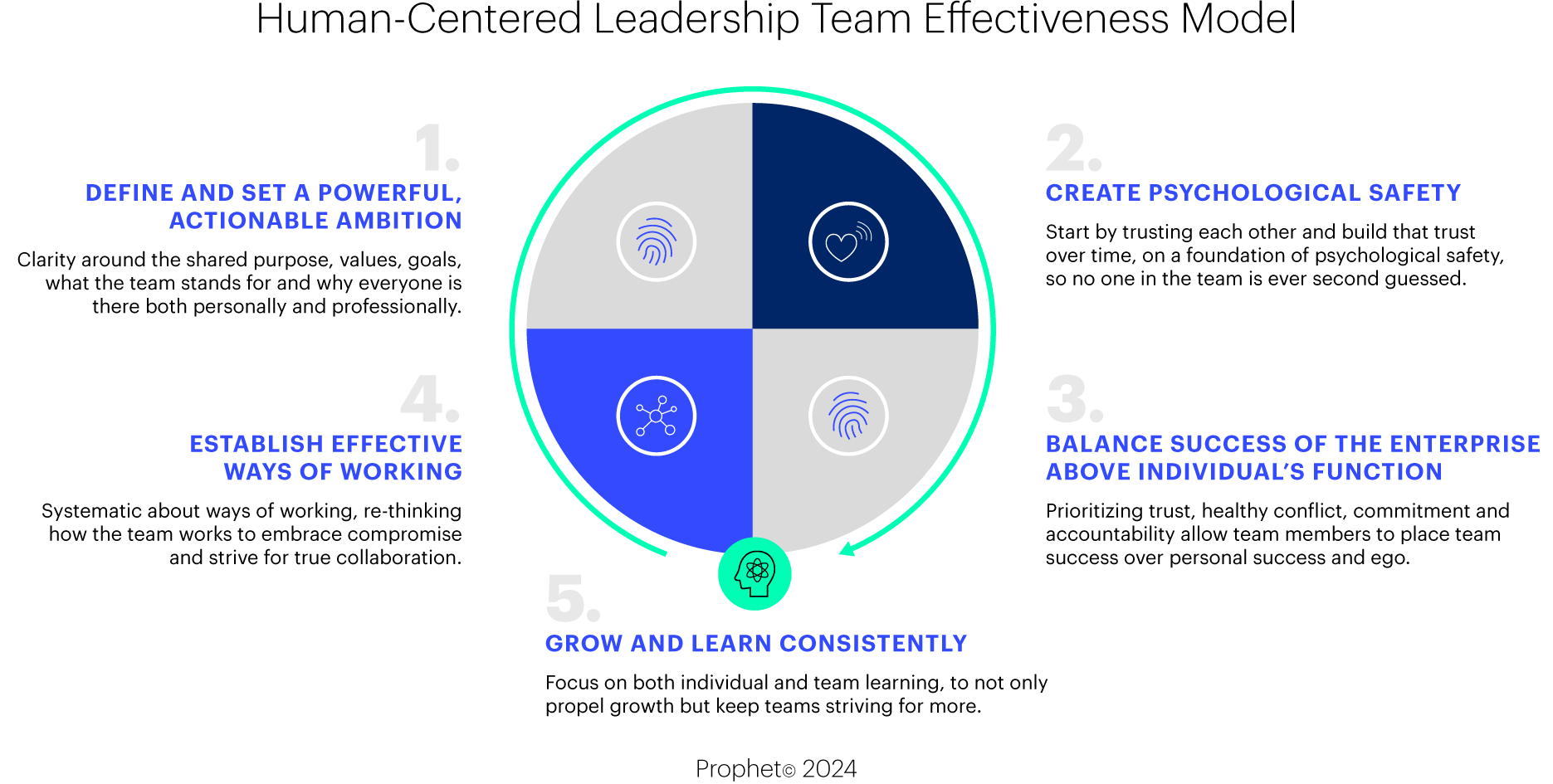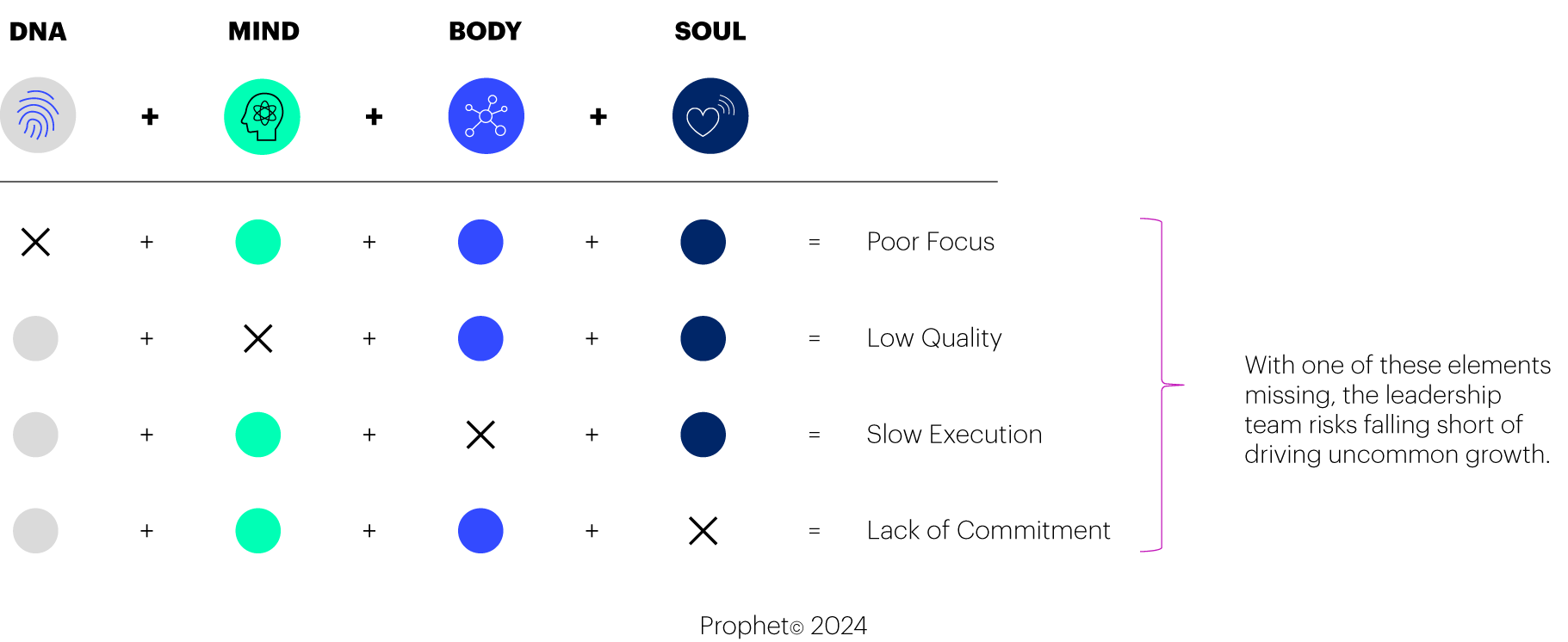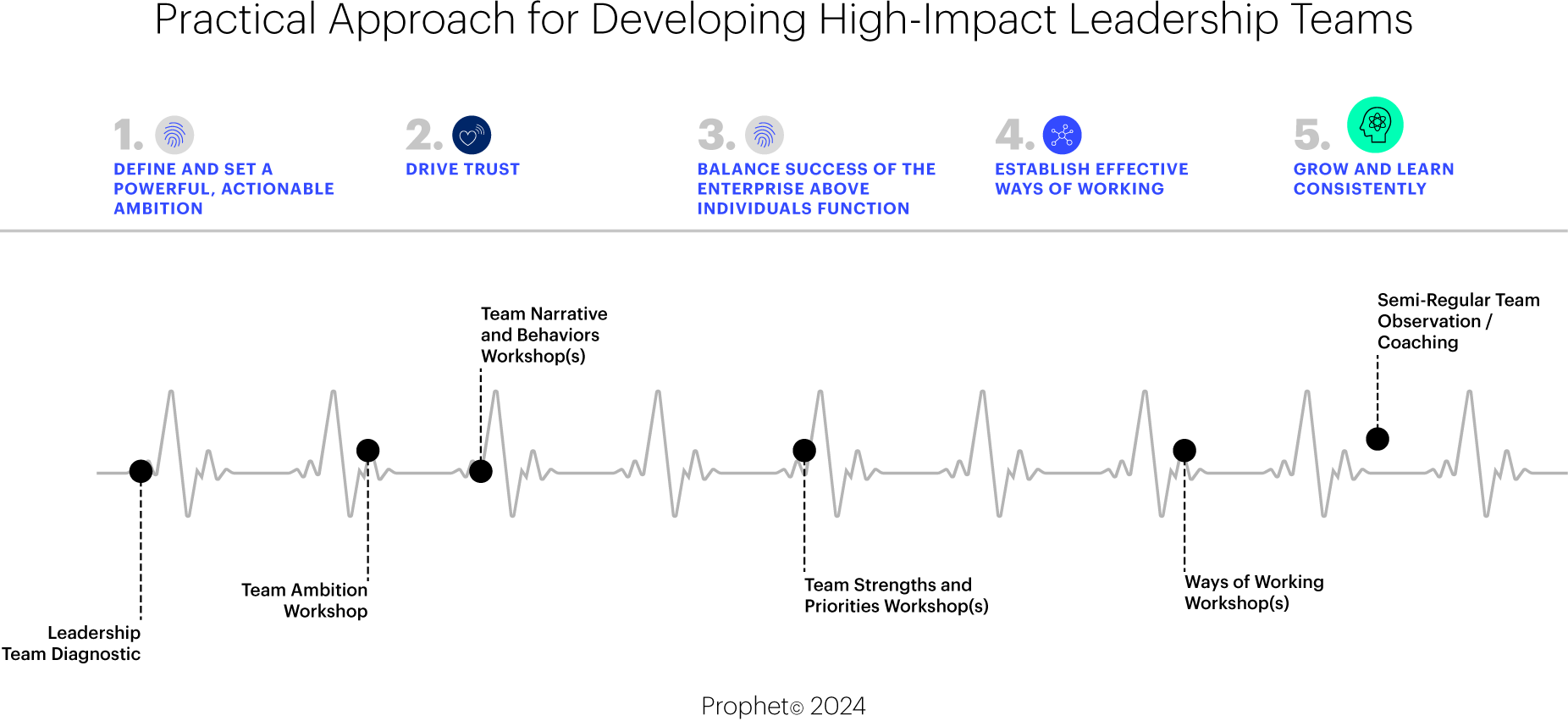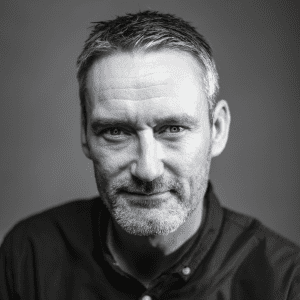BLOG
Growth Leadership: How Effective Leaders Drive Unstoppable Business Success
To tackle today’s challenges and drive long-term success, leadership teams must continually evolve. Here, we outline how to shape effective leadership teams that can sustain momentum and navigate growth.
This year, we’ve been focusing on uncommon growth – how to unlock, create and execute it. Our latest insights confirmed something we’ve always known: leadership is fundamental to successful, sustainable growth. But the wrong kind of leadership can be disastrous.
Take WeWork, for example. Poor governance and erratic leadership resulted in poor decision-making, ultimately costing the company $1.9 billion in revenue. At the Royal Bank of Scotland, a lack of banking experience and attention to risk led to a balance sheet that ballooned to £2.2 trillion (larger than the GDP of the UK) before collapsing.
On the flip side, Adobe’s leadership transformation sparked innovation, doubling its stock performance between 2018 and 2021. Shantanu Narayen’s vision and the capabilities of his team led to continuous improvement and growth. Similarly, LEGO’s focus on culture and capabilities turned an $800 million debt into $600 million in profits. Even in sports, the All Blacks’ leadership has driven them to win 75% of their games.
The takeaway? Leadership impacts an organization’s performance more than anything else. However, most are “teams of leaders” rather than true “leadership teams.” Our research shows that to drive sustainable growth, organizations need cohesive leadership teams, not just individual leaders. After years of working with teams at all levels, we’ve distilled key insights on how to shape effective leadership teams that can sustain growth.
1. Leadership Teams Need Continuous Nurturing and Development
Leadership teams, like people, are living systems that require constant care. Our annual Catalyst Change research found that successful transformations are built on true collaboration, where enterprise and individual interests are integrated. Effective teams shift from an individual focus to a shared team mindset. Figure 1 illustrates this shift from a “team of leaders” to a “leadership team,” with shared goals and genuine collaboration at its core.

Figure 1: Moving from a team of leaders to a leadership team
In today’s rapidly changing business landscape, leadership teams must understand their needs and ensure their mindset, purpose and goals remain aligned with organizational and stakeholder needs. Our research reveals that leadership teams failing to champion collaboration and shared goals risk fragmentation and siloed operations, leading to a 3.5-fold increase in the time it takes for strategic decision-making compared to teams with integrated structures. Gallup research also found that leaders who focus on development and use their strengths effectively are 6x more likely to be engaged, 7.8% more productive and 3x more likely to report a good quality of life. It was with this understanding that we helped the executive team of a 2,000-strong leading agricultural vehicle manufacturer optimize performance by shifting from an “I” mentality to a “we” mentality, driving success through effective teamwork that bridged functional divides and fostering both internal and external growth.
2. Address All Dimensions of the Human-Centered Leadership Team Effectiveness Model
Prophet’s Human-Centered Transformation Model (HCTM) is a proven holistic and people-centered approach to driving growth across organizations. The model is built on the idea that organizations reflect the same makeup as a human including the DNA, mind, body and soul. Effective leadership teams need to follow a similar model that not only builds trust and effective ways of working but aligns individual members to a shared enterprise goal. The Human-Centered Leadership Team Effectiveness Model (Figure 2) shows that addressing all dimensions of the human system is essential for empowering effective outcomes.

Figure 2: Prophet’s Human-Centered Leadership Team Effectiveness Model
Questions that should be asked include:
- DNA: What is our focus and shared ambition that drives the work of our team?
- Mind: What new skills are required for the team to drive change?
- Body: What might need to change in our operating model to enable team performance?
- Soul: How might we ignite belief in the change to foster trust and productive relationships?
As Figure 3 illustrates, if any of these elements from the model are missing, this has a knock-on effect on leadership teams, increasing the risk of falling short on goals due to a lack of commitment, poor focus and low-quality work.

Figure 3: What happens when part of the leadership system is missing
3. Sustain Leadership Team Effectiveness Through Actionable Development
Continuing with the human system analogy, leadership team development requires establishing “healthy rhythms” of working and meeting. Figure 4 shows how these rhythms can propel an existing leadership team towards high performance and effectiveness.

Figure 4: Actionable approach to leadership team development
This approach combines both “art and science” to shape team dynamics, capabilities, identity and culture of the leadership team. It involves:
- Conducting a leadership team diagnostic to help the team (and other stakeholders) identify opportunities for improvement based on how the team currently functions.
- Early alignment of the team’s purpose, ambition and role within the wider organization, so it can provide both clear leadership and staff empowerment by knowing its distinct contribution to success.
- Ensuring psychological safety through trust-building workshops. The team narrative and behavior workshops help teams build trust through sharing their whole selves, the meaning they derive from their work and committing to the behaviors to sustain trust.
- Prioritizing trust, healthy conflict and accountability to align the team’s success over individual ego. To uncover this a team strengths and priorities workshop helps sets OKRs and leans into the strengths of the leadership team.
- Systematically defining ways of working and decision-making processes. In a session around ways of working, the team can shape the purpose of leadership meetings, how decision-making works and define an effective cadence of meetings.
- Focusing on both individual and team learning to sustain growth and development. This typically involves team check-ins (potentially with an observer to feedback on process), re-running of the team diagnostic, team and individual coaching and continuation of individual development.
Leadership teams are the driving force behind an organization’s performance, especially in today’s rapidly changing world. The key challenge lies not just in the competence of individual leaders but in the collective effectiveness of the leadership team. Like individuals, leadership teams require nurturing and careful development. Breaking free from functional silos requires a rhythm that fuses a human-centered approach with both art and science, creating a sustainable and highly effective team.
FINAL THOUGHTS
To start this journey in your organization, consider the following questions:
- Does your leadership team have a shared view of success?
- Does the team trust one another and actively collaborate to achieve this shared goal?
- What are the missing ingredients from the five components of Prophet’s Human-Centred Leadership Team Effectiveness
Reach out to our experts to explore our approach further and assess your leadership team’s effectiveness, starting with our team diagnostic.


